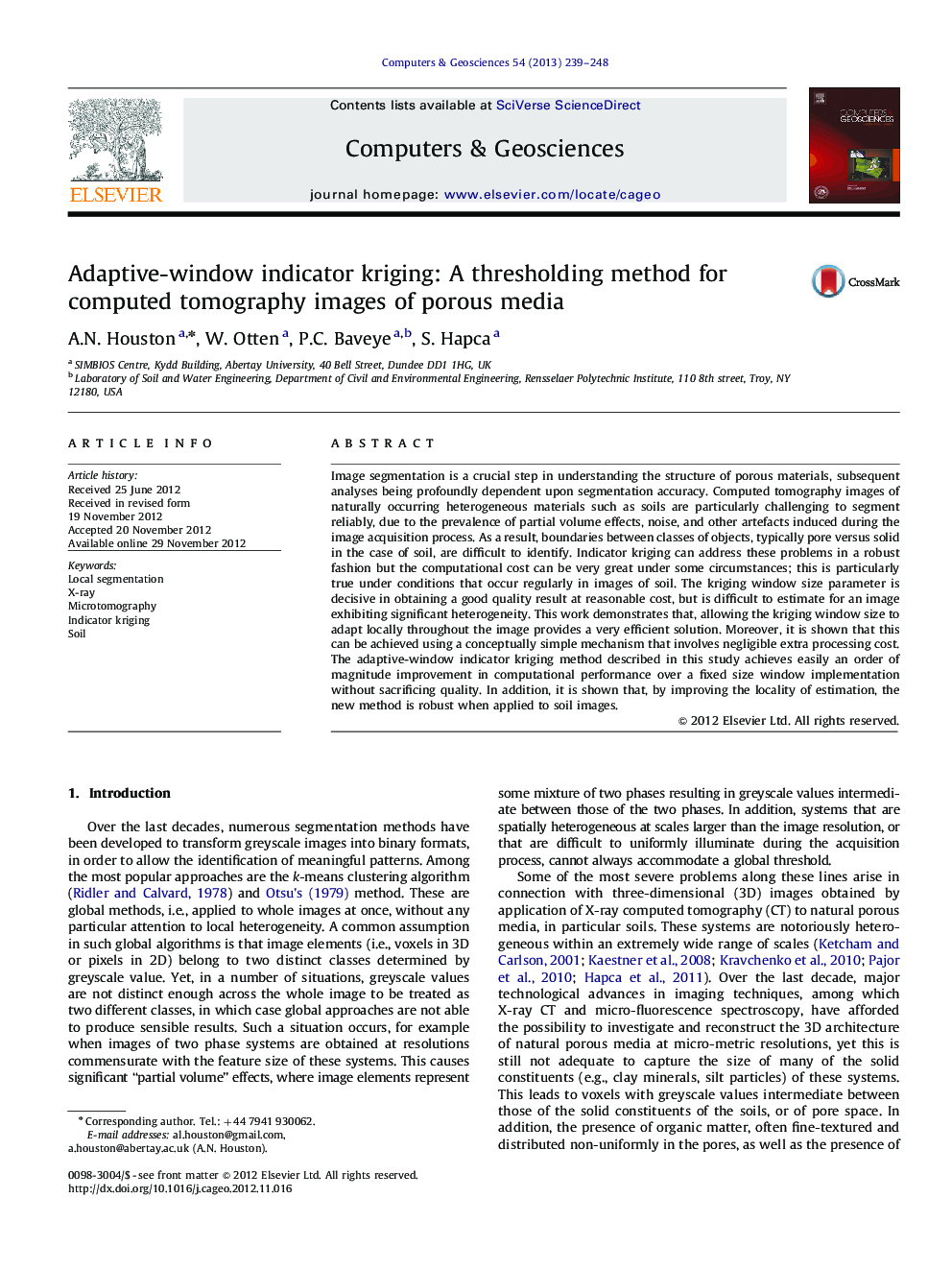| Article ID | Journal | Published Year | Pages | File Type |
|---|---|---|---|---|
| 507025 | Computers & Geosciences | 2013 | 10 Pages |
Image segmentation is a crucial step in understanding the structure of porous materials, subsequent analyses being profoundly dependent upon segmentation accuracy. Computed tomography images of naturally occurring heterogeneous materials such as soils are particularly challenging to segment reliably, due to the prevalence of partial volume effects, noise, and other artefacts induced during the image acquisition process. As a result, boundaries between classes of objects, typically pore versus solid in the case of soil, are difficult to identify. Indicator kriging can address these problems in a robust fashion but the computational cost can be very great under some circumstances; this is particularly true under conditions that occur regularly in images of soil. The kriging window size parameter is decisive in obtaining a good quality result at reasonable cost, but is difficult to estimate for an image exhibiting significant heterogeneity. This work demonstrates that, allowing the kriging window size to adapt locally throughout the image provides a very efficient solution. Moreover, it is shown that this can be achieved using a conceptually simple mechanism that involves negligible extra processing cost. The adaptive-window indicator kriging method described in this study achieves easily an order of magnitude improvement in computational performance over a fixed size window implementation without sacrificing quality. In addition, it is shown that, by improving the locality of estimation, the new method is robust when applied to soil images.
► The need to improve segmentation methods for porous media is explained. ► An inherent weakness of conventional “fixed window” indicator kriging is exposed. ► A novel mechanism that locally adapts the size of kriging window is presented. ► Method evaluation uses X-ray CT images of soil; Minkowski functionals are analysed. ► The advantage of an adaptive window is demonstrated and improvements suggested.
